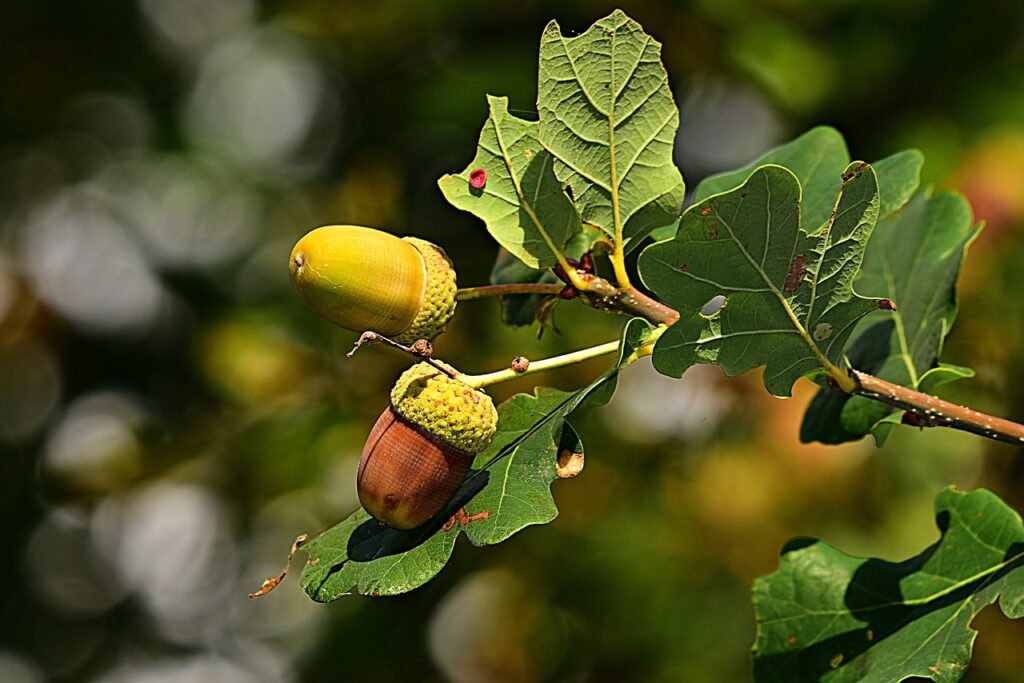
Oak trees are a common sight in many parts of the world and are known for their majestic appearance. These trees are often used for their wood, which is highly valued in the furniture industry. However, one question that many people may have is how tall oak trees can grow.
The height of an oak tree can vary depending on a number of factors, including the species of oak, the environment in which it grows, and the age of the tree. Some oak trees can grow to be over 100 feet tall, while others may only reach a height of 20 feet. The tallest oak tree on record was over 144 feet tall.
Despite the variation in height among oak trees, there are certain characteristics that are common among all species. For example, oak trees are known for their strong and sturdy trunks, which can grow to be several feet in diameter. Additionally, oak trees are known for their deep root systems, which help them to withstand high winds and other environmental factors.
Table of Contents
Understanding Oak Trees
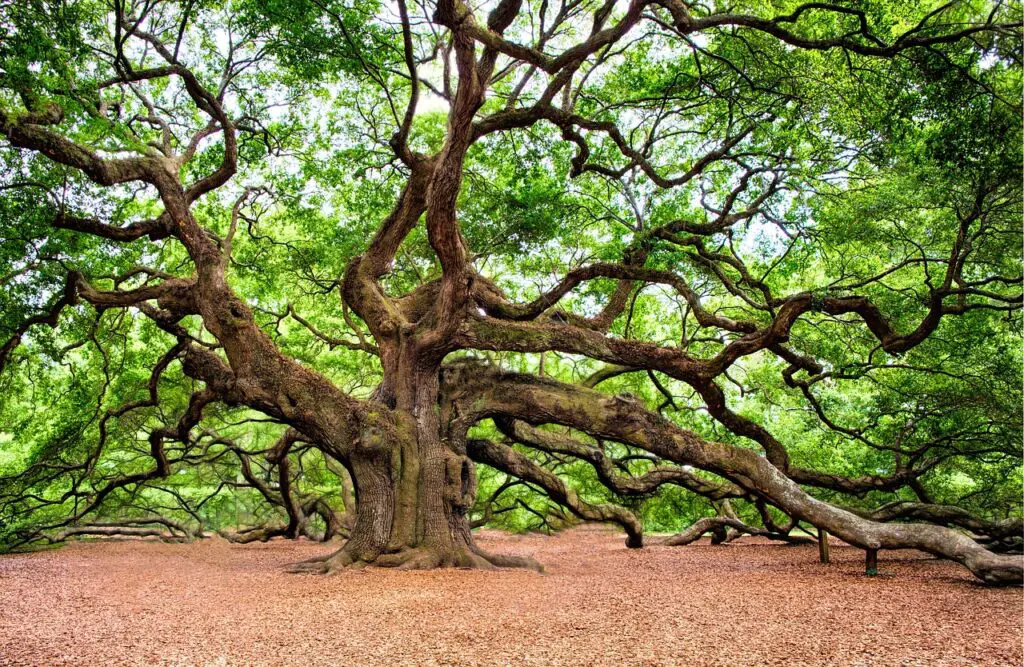
Oak trees are a common sight in many parts of the world. They are a type of tree that belongs to the genus Quercus, which contains over 600 species. Oak trees are known for their strength, durability, and longevity. They can live for hundreds of years and grow to be very tall.
There are two types of oak trees: deciduous and evergreen. Deciduous oak trees lose their leaves in the fall, while evergreen oak trees keep their leaves year-round. The leaves of oak trees are typically lobed and can vary in size and shape depending on the species.
Oak trees are known for their hard, dense wood, which is used for a variety of purposes, including furniture, flooring, and construction. The acorns of oak trees are also an important food source for many animals, including squirrels, deer, and birds.
Some of the most common species of oak trees include the white oak, red oak, and black oak. The white oak is known for its light-colored bark and leaves, while the red oak has a darker bark and leaves. The black oak has a rough, dark bark and leaves that turn a deep red in the fall.
In conclusion, oak trees are a fascinating species of tree that have many unique characteristics. They are strong, durable, and long-lived, and are an important part of many ecosystems. Whether you are admiring their beauty or using their wood for construction, oak trees are an important part of our natural world.
Types of Oak Trees
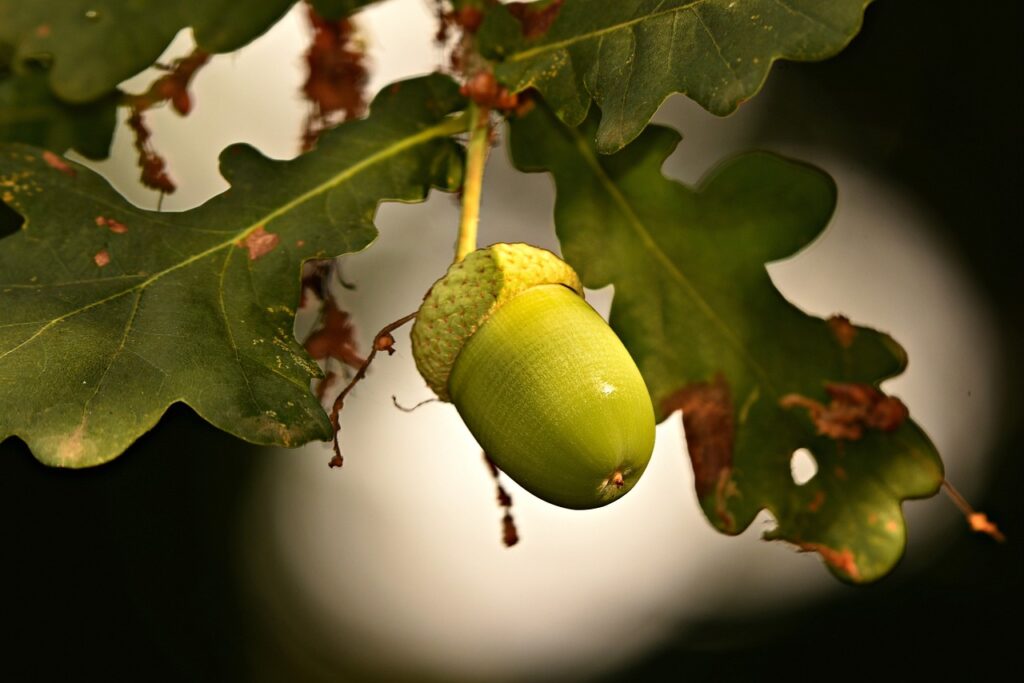
Oak trees are a diverse group of trees that come in many different shapes and sizes. Some oak trees are tall and majestic, while others are more compact and shrub-like. There are many different types of oak trees, each with their own unique characteristics and growing requirements.
White Oak
White oak trees are known for their strong, durable wood, which is used in a variety of construction projects. These trees can grow up to 100 feet tall and have a spread of up to 80 feet. They are commonly found in the eastern United States, from Maine to Florida.
Red Oaks
Red oak trees are a group of trees that includes several different species, including northern red oak and blackjack oak. These trees are known for their distinctive red bark and acorns. They are commonly found in the eastern United States, from Maine to Texas.
Pin Oak
Pin oak trees are a popular ornamental tree, known for their distinctive shape and bright fall foliage. These trees can grow up to 70 feet tall and have a spread of up to 40 feet. They are commonly found in the eastern United States, from New York to Texas.
Willow Oak
Willow oak trees are known for their long, narrow leaves and slender branches. These trees can grow up to 100 feet tall and have a spread of up to 60 feet. They are commonly found in the southeastern United States, from Virginia to Florida.
Black Oak
Black oak trees are known for their dark, rough bark and distinctive acorns. These trees can grow up to 80 feet tall and have a spread of up to 50 feet. They are commonly found in the eastern United States, from Maine to Texas.
Bur Oak
Bur oak trees are known for their large, leathery leaves and distinctive acorns. These trees can grow up to 100 feet tall and have a spread of up to 80 feet. They are commonly found in the central and eastern United States, from North Dakota to Texas.
Scarlet Oak
Scarlet oak trees are known for their bright red fall foliage and distinctive acorns. These trees can grow up to 80 feet tall and have a spread of up to 50 feet. They are commonly found in the eastern United States, from New Jersey to Georgia.
Water Oak
Water oak trees are known for their slender branches and small, rounded leaves. These trees can grow up to 80 feet tall and have a spread of up to 60 feet. They are commonly found in the southeastern United States, from Virginia to Florida.
Southern Live Oak
Southern live oak trees are known for their twisting, gnarled branches and evergreen leaves. These trees can grow up to 80 feet tall and have a spread of up to 100 feet. They are commonly found in the southeastern United States, from Virginia to Texas.
Chestnut Oak
Chestnut oak trees are known for their distinctive, deeply furrowed bark and large acorns. These trees can grow up to 100 feet tall and have a spread of up to 80 feet. They are commonly found in the eastern United States, from Maine to Georgia.
English Oak
English oak trees are known for their strong, durable wood and distinctive acorns. These trees can grow up to 100 feet tall and have a spread of up to 80 feet. They are commonly found in Europe, from England to Russia.
Evergreen Oak
Evergreen oak trees are known for their glossy, dark green leaves and distinctive acorns. These trees can grow up to 80 feet tall and have a spread of up to 50 feet. They are commonly found in the Mediterranean region, from Spain to Turkey.
Post Oak
Post oak trees are known for their twisting, gnarled branches and small, rounded leaves. These trees can grow up to 50 feet tall and have a spread of up to 50 feet. They are commonly found in the central and eastern United States, from Kansas to Texas.
Cork Oak
Cork oak trees are known for their thick, corky bark and distinctive acorns. These trees can grow up to 50 feet tall and have a spread of up to 40 feet. They are commonly found in the Mediterranean region, from Portugal to Italy.
Chinkapin
Chinkapin trees are known for their small, rounded leaves and distinctive acorns. These trees can grow up to 50 feet tall and have a spread of up to 50 feet. They are commonly found in the southeastern United States, from Virginia to Florida.
Northern Red Oak
Northern red oak trees are known for their strong, durable wood and distinctive acorns. These trees can grow up to 100 feet tall and have a spread of up to 80 feet. They are commonly found in the eastern United States, from Maine to Georgia.
Blackjack Oak
Blackjack oak trees
Geographical Distribution
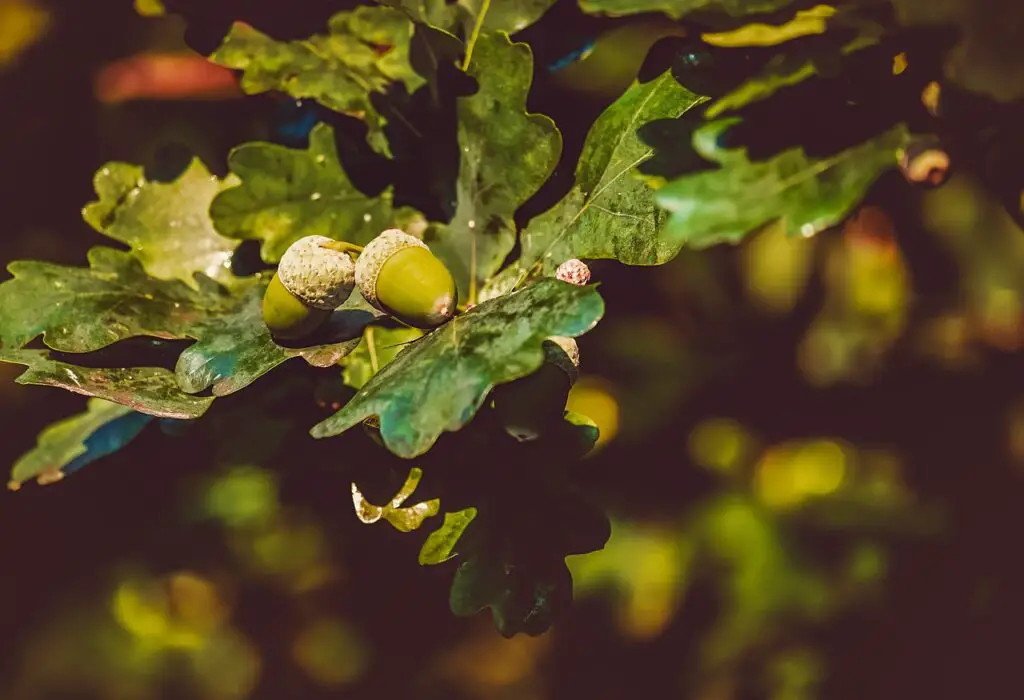
Oak trees are native to the Northern Hemisphere and are found in many parts of the world, including North America, Europe, and Asia. There are over 600 species of oak trees, and they are distributed across various habitats, including forests, woodlands, and savannas.
In North America, oak trees are found throughout the United States, from the eastern seaboard to the western coast. The oak species found in the United States include the white oak, red oak, and bur oak, among others. Oak trees are also found in Mexico, particularly in the central and southern parts of the country.
In Europe, oak trees are found in many countries, including the United Kingdom, France, and Germany. The English oak is a particularly well-known species that is found throughout the UK. Oak trees are also found in many parts of Asia, including China, Japan, and Korea.
Oak trees are also found in various parts of Africa, including South Africa, Zimbabwe, and Tanzania. In Africa, oak trees are often found in savanna habitats, where they provide important shade and shelter for wildlife.
Overall, oak trees are widely distributed across many different habitats and regions of the world. They are an important part of many ecosystems and provide numerous benefits to both wildlife and humans alike.
Physical Characteristics
Oak trees are known for their grandeur and majesty, towering over other trees in the forest. They are one of the tallest deciduous trees, with heights ranging from 50 to 100 feet tall, and some species can grow up to 150 feet tall.
The bark of an oak tree is rough and deeply furrowed, providing a protective layer against insects and disease. The bark color varies depending on the species, ranging from gray to brown.
Acorns are the fruit of the oak tree, and they are an important food source for many animals, including squirrels, deer, and birds. The size and shape of the acorn varies depending on the species, but they are generally around 1 inch long and have a distinct cap.
Oak tree branches are sturdy and can support a large amount of foliage. They grow in a broad, spreading pattern, creating a wide canopy that provides ample shade.
The trunk of an oak tree is thick and sturdy, with a diameter ranging from 2 to 4 feet. The wood is dense and strong, making it a popular choice for furniture and construction.
Oak tree leaves are deciduous and lobed, with a distinct shape that varies depending on the species. The leaves can range in size from 2 to 8 inches long, and they are typically green in color.
Overall, oak trees are impressive in size and stature, with a strong and sturdy physical structure that allows them to thrive in a variety of environments.
Oak Trees and Biodiversity
Oak trees are an important part of the ecosystem due to their significant contribution to biodiversity. They provide habitats for a wide range of wildlife, including insects, birds, and mammals, which rely on them for food and shelter. The presence of oak trees in a landscape can greatly enhance its natural beauty and provide a sense of tranquility and peacefulness.
In parks and gardens, oak trees are often used as ornamental trees due to their attractive foliage and majestic appearance. They can also be used to create shaded areas for people to relax and enjoy the outdoors. Additionally, oak trees are an important source of food for many species of wildlife, including squirrels, deer, and birds.
Oak trees are also important for their role in promoting biodiversity. They provide a diverse range of habitats, from the ground level to the canopy, which support a wide range of plant and animal species. The canopy of oak trees is particularly important, as it provides a unique microclimate that supports a diverse range of plants, including epiphytes and lichens.
The presence of oak trees in a landscape can also promote the growth of other plant species, such as beech and wildflowers. This can help to create a more diverse and vibrant ecosystem, which is essential for maintaining a healthy and sustainable environment.
In conclusion, oak trees are an important part of our natural environment, providing a wide range of benefits to both wildlife and humans. Their contribution to biodiversity cannot be overstated, and their presence in a landscape can greatly enhance its natural beauty and promote a sense of tranquility and peacefulness.
Growth and Lifespan
Oak trees are known for their long lifespan, with some species living for over 500 years. The lifespan of an oak tree largely depends on the species, growing conditions, and external factors such as disease and climate.
While oak trees are often grown for their ornamental value, they are also prized for their wood, which is used in construction and furniture making. Oak trees are slow-growing, taking several decades to reach maturity.
Some of the fastest-growing oak trees include the Nuttall oak, which can grow up to 3 feet per year, and the pin oak, which can grow up to 2 feet per year. However, it is important to note that even the fastest-growing oak trees still take several years to reach maturity.
The growth rate of oak trees can also be affected by factors such as soil quality, water availability, and sunlight. In general, oak trees prefer well-drained soil and full sunlight.
Overall, oak trees are a valuable and long-lasting addition to any landscape. With proper care and maintenance, they can provide beauty and shade for generations to come.
Care and Maintenance
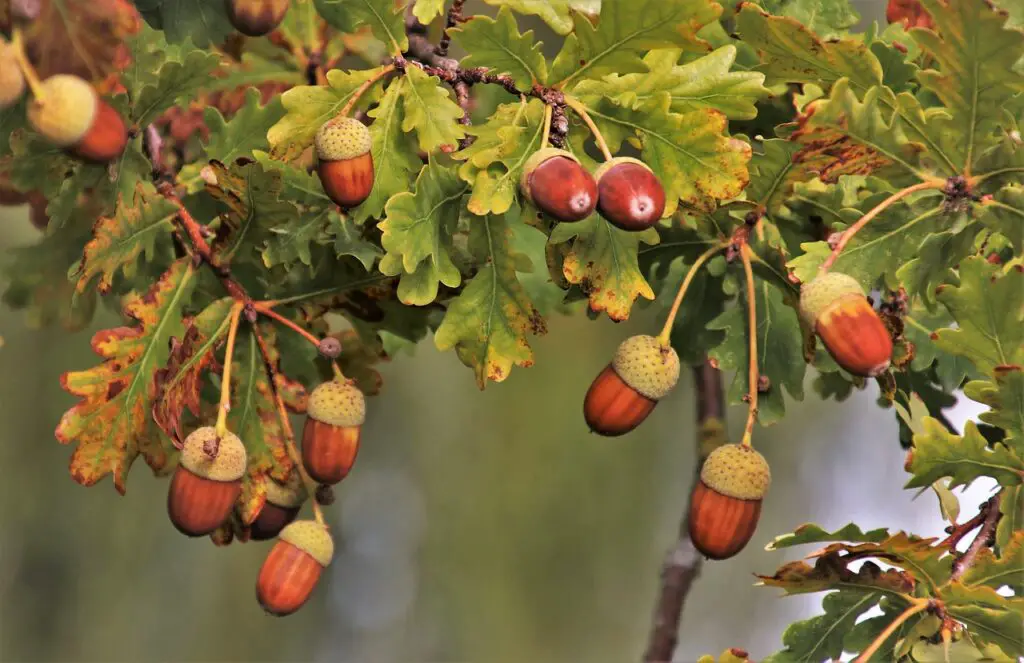
Oak trees are generally low-maintenance trees, but there are some things you can do to help your oak tree thrive.
Soil Conditions
Oak trees prefer well-drained soil that is rich in organic matter. If your soil is compacted or heavy, you can improve its drainage by adding compost or other organic matter. Avoid planting oak trees in areas with poor drainage, as this can lead to root rot.
Pruning
Oak trees do not require regular pruning, but it is important to remove dead or damaged branches as soon as possible. This will help prevent the spread of disease and insect infestations. If you need to prune your oak tree, do so in the late fall or winter when the tree is dormant.
Pests
Oak trees are susceptible to a variety of pests, including oak wilt, galls, and borers. To prevent these pests from infesting your oak tree, keep the area around the tree free of weeds and debris. If you notice any signs of pest infestation, contact a professional arborist for advice on how to treat the problem.
Overall, with proper care and maintenance, your oak tree can provide beauty and shade for many years to come.
Oak Tree Identification
Oak trees are known for their tall stature and beautiful leaves. These trees can grow up to 100 feet tall and can be found in various regions around the world. There are more than 600 species of oak trees, and they are all part of the Quercus genus.
One way to identify an oak tree is by its leaves. Oak trees typically have lobed leaves, with the number of lobes varying depending on the species. The white oak group, for example, has leaves with rounded lobes, while the red oak group has leaves with pointed lobes.
Another way to identify an oak tree is by its bark. Oak tree bark can be rough or smooth, and its color can range from gray to brown. Some species of oak trees, such as the white oak, have bark that is light gray and scaly.
Oak trees also produce acorns, which can help with identification. The size and shape of the acorns can vary depending on the species of oak tree. For example, the acorns of the white oak are round and have a sweet taste, while the acorns of the red oak are oblong and bitter.
Overall, identifying an oak tree can be done by looking at its leaves, bark, and acorns. With over 600 species of oak trees, it’s important to pay attention to the details to correctly identify the tree.